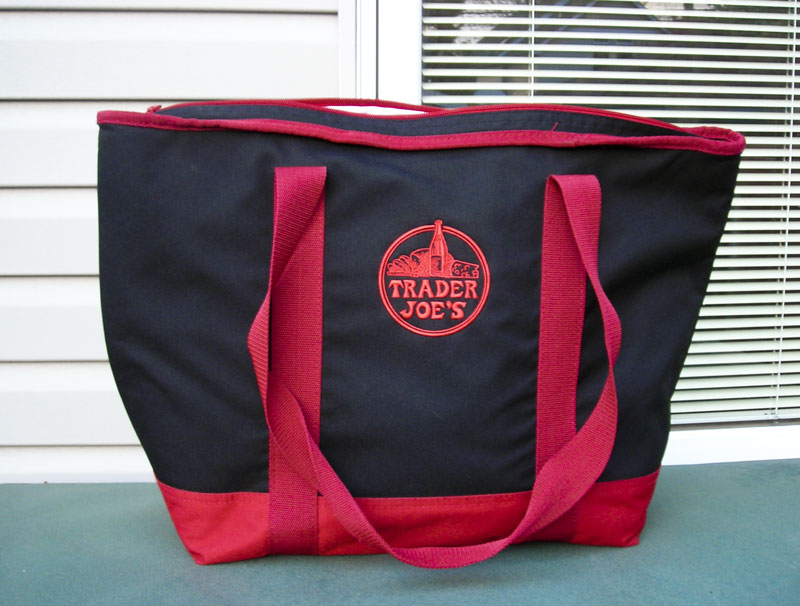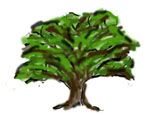Everywhere I look, particularly in Oak Park, I see reusable cloth bags, and I think this is a wonderful thing. Boring, beige, monochromatic bags. Bright red bags with floral patterns. Businesses doing their advertising via logos on reusable bags. A veritable cornucopia of reusable bags.
This one is one of my favorites, although Trader Joe’s doesn’t sell it anymore. It’s insulated and sturdy.
Still, I wonder if we can’t do a little better with some help from our grocery stores. It’s fantastic that we’re cutting down so much on plastic bag use, but what about everything that goes into the bag? Lots of cardboard, plastic trays, plastic produce bags, etc. How much difference does it make to bring a reusable bag and fill it with packaging that goes into a landfill?
I’ll give the waste management company that picks up Oak Park’s recycling props – we can recycle a lot more than most places can, and I’m very glad of this. They make it so easy too, as it all goes in the same bin. Nonetheless, I would argue that the triple-R catchphrase “reduce, reuse, recycle” is actually in order of preference, or greenness, if you will. Reducing means less waste going out of our homes, less material going into making and selling products, and less energy used to produce said products, whether we’re talking about reducing units of product consumed or reducing packaging for a given product. It’s the closest to ideal of the three. Reusing means less waste exiting our homes, but we’ve still used energy and materials producing the product and its packaging. Recycling means we’re reducing some of the material we as a whole consume via product made out of recycled materials, but we’re using energy and materials to produce it, we usually don’t get as much recycled end material as we started out with unless it’s glass, and recycling requires energy use. I think in a world where all or the vast majority of our energy came from renewable, green sources, this might change the equation drastically. As it stands, recycling is worth doing and much better than adding to landfills, yet still the farthest from the ideal.
It’s still desirable, in my opinion, to engage in all three, and in my experience, the store that makes all three Rs the easiest is Trader Joe’s. Quite a bit of their packaging can be recycled, or in the case of the cardboard they favor for certain vegetables, recycled or composted. I’ve already posted about reusing yogurt containers for legumes at the bottom of this post, and I’m hoping to find ways to reuse some of the many glass containers I get at TJs. Maybe those can house some of the chipotle sauce I mentioned, but even when I recycle them I know that the end result is as much glass as was put in. Trader Joe’s also welcomes – and sells – reusable bags, and if I buy loose produce, the checkers never even blink when they see I’m not using clear produce bags. They’re also the friendliest grocery store in town, and who doesn’t love that? Well, okay. Maybe very cranky people don’t love it, but I bet they’re not reading this.
Oh, and speaking of composting, where does that fall amongst the three Rs? I’d say it’s reusing if you make actual compost and use it in your garden.
By pointing these things out, I don’t at all mean to nitpick or discourage anyone. I recycle and I even buy some items made of recycled materials. I avoid using paper towels almost 100% of the time, but when I do buy them, I buy recycled. Recycled toilet paper all the way in this house too. Sorry guests, I know it’s not the softest, but I think a market for recycled products greases the wheels. No one is going to bother recycling paper and plastic if no one buys the result. And while we have a long way to go, I believe it’s worth continuing on this path. We can’t completely avoid consumption, either of materials or energy, but we can use our big brains to cut down on our consumption of both.





